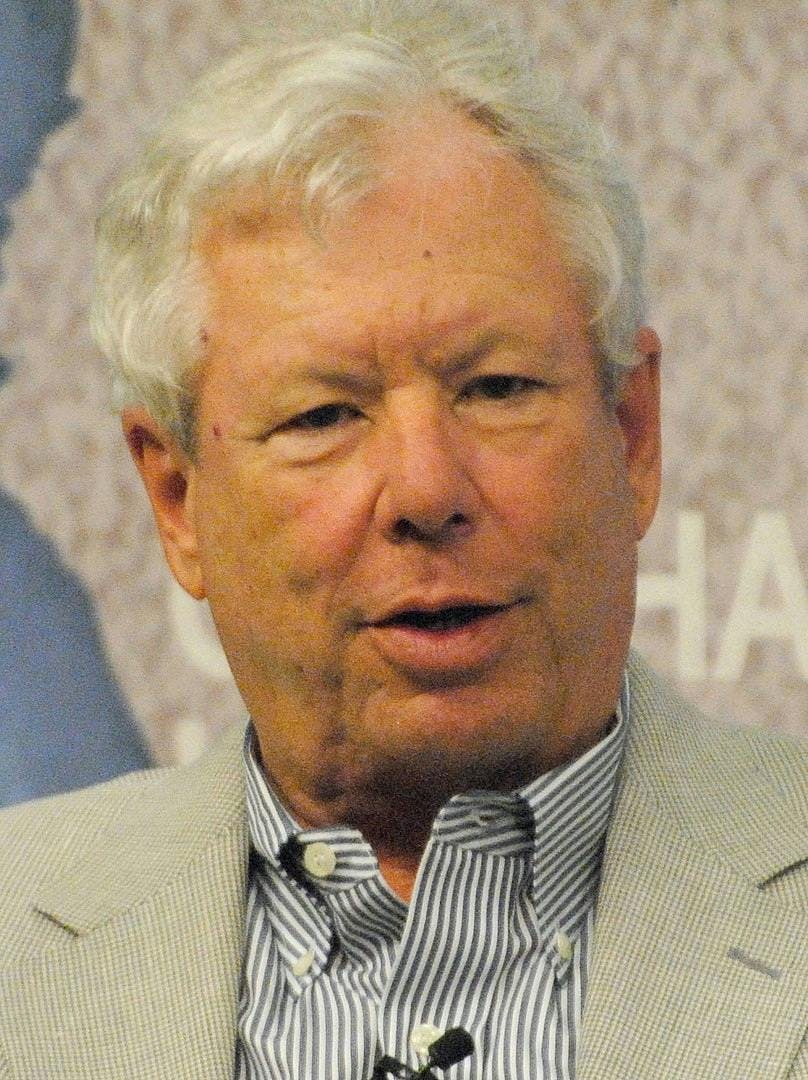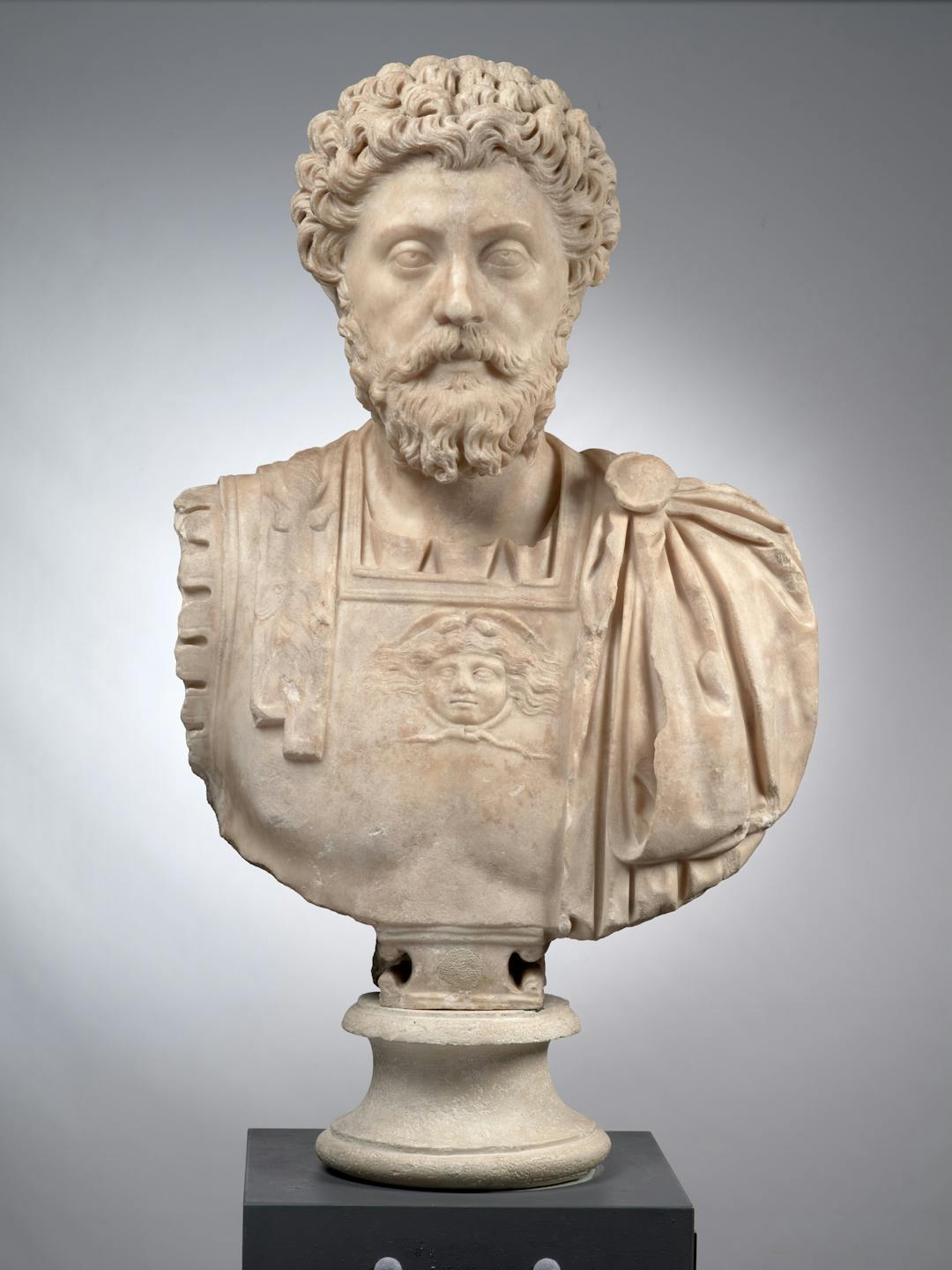Richard Thaler
Bringing economics into the real world of human decision-making
Intro
As the winner of the 2017 Nobel Memorial Prize in Economics, it goes without saying that Richard Thaler has made several key contributions to behavioral economics. His work is particularly noteworthy due to the ways in which it integrates the fields of economics and psychology. Since the early days of his career, Thaler has been fascinated by the anomalies of economic life; the financial decisions people make that cannot be explained through understanding humans as rational actors. In order to explain these phenomena, Thaler had to challenge existing theories and endure the backlash that followed. It may have been an uphill battle but today he is recognized as one of the leading figures in his field.1
A nudge, as we will use the term, is any aspect of the choice architecture that alters people’s behavior in a predictable way without forbidding any options or significantly changing their economic incentives.
– Richard H. Thalerin Nudge: Improving Decisions About Health, Wealth, and Happiness
On their shoulders
For millennia, great thinkers and scholars have been working to understand the quirks of the human mind. Today, we’re privileged to put their insights to work, helping organizations to reduce bias and create better outcomes.
Innovative ideas
“Psychologists tell us that in order to learn from experience, two ingredients are necessary: frequent practice and immediate feedback.”
― Richard H Thaler in Misbehaving: The Making of Behavioural Economics
The endowment effect – We value items more when they belong to us
Thaler presents the theory behind the endowment effect in “Toward a Positive Theory of Consumer Choice” (1980).2 It is a cognitive bias that significantly impacts our decision-making by leading us to value our possessions more than we would if we did not own them. The endowment effect is one example of how Thaler’s work challenges the predominant theories of economics. The assumption was, and often still is, that people consistently make rational decisions, something Thaler feels to be unrealistic. Early in his career, Thaler noticed several patterns of irrational behavior that did not align with the theories of the time. He refers to these as “anomalies” and has dedicated much of his career to explaining them. He developed the endowment effect to explain the irrational behavior often seen in buying and selling. In his 1980 paper, Thaler provides several examples of where this bias might occur. He has since collaborated with Daniel Kahneman and Jack Knetsch to conduct a series of studies to provide empirical evidence in support of the endowment effect’s existence.3
“A choice architect has the responsibility for organizing the context in which people make decisions.”
― Richard H. Thaler in Nudge: Improving Decisions About Health, Wealth, and Happiness
This bias describes the phenomena by which we assign greater value to an item when we own it than we would if we did not own it. This can lead us to spend more on certain items than we had originally intended. For example, if we buy a new winter coat, only to realize it does not suit us as we hoped it would, we may have trouble returning it for a refund due to the sense of ownership we have over it. Not getting the refund means we have spent money we could have otherwise saved. The endowment effect may also lead us to overprice items we are trying to sell. For example, if you bought a concert ticket for 50$ and later found out you could no longer attend, you may put it up for sale for 75$ to avoid feeling like you are losing something.
By challenging the assumptions on which economic theory was built, Thaler provided us with a more accurate understanding of decision-making. We as humans make illogical and irrational choices all the time and in a highly predictable manner. The endowment effect in particular is an important theory for painting an accurate picture of sales. Whether you are an academic studying sales or a salesperson attempting to optimize your sales, knowledge of this bias and the theory behind it is vital.
“A wine-loving economist we know purchased some nice Bordeaux wines years ago at low prices. The wines have greatly appreciated in value, so that a bottle that cost only $10 when purchased would now fetch $200 at auction. This economist now drinks some of this wine occasionally, but would neither be willing to sell the wine at the auction price nor buy an additional bottle at that price. Thaler (1980) called this pattern – the fact that people often demand much more to give up an object than they would be willing to pay to acquire it – the endowment effect.”
― Daniel Kahneman, Jack L. Knetsch, Richard H. Thaler in Anomalies: The Endowment Effect, Loss Aversion, and Status Quo Bias (1991)
Naive diversification – We allocate our resources evenly across options
Another anomaly in decision-making Thaler noticed was people’s tendency to divide their resources among the options available to them. He dubbed this phenomenon “naive diversification”. Within this bias, there are extreme cases where individuals may allocate their resources evenly among the possible options, regardless of whether the options themselves can be considered equal. Thaler denotes this extreme case of naive diversification as the 1/n heuristic, where “n” represents the number of available options. Working in collaboration with Shlomo Benartzi, Thaler penned one of the earliest and more influential papers on this topic, “Naive Diversification Strategies in Defined Contribution Savings Plans” (2001).4 In this paper, Thaler and Benartzi investigated naive diversification in the context of savings plans and discovered that asset allocation was positively associated with the number of funds the savings plan participants were presented with. Importantly, they also demonstrated that this bias only occurs when decisions are being made simultaneously. The effect is not observed for decisions made sequentially, that is, at separate time points.
Naive diversification describes our tendency to divide our resources among the available options. An example of a study presented by Thaler and Benartzi in their paper involved young trick-or-treaters’ candy selection. The first group of trick-or-treaters went to two separate houses, one after the other. At both houses, they were presented with two piles of chocolate bars, one pile of Three Musketeers bars and one pile of Milky Way bars. They were instructed to choose one candy bar at each house. A second group of trick-or-treaters went to one house, where they were presented with a pile of Three Musketeers bars and a pile of Milky Way bars and were told to select two candy bars. Of the children who went to two separate houses, 48% choose two different candy bars. However, of the children who went to one house, 100% chose two different candy bars. These results demonstrate how making simultaneous decisions can lead us to rely on naive diversification in our decision-making, while this bias does not influence us when we make sequential decisions.5
“The combination of loss aversion with mindless choosing implies that if an option is designated as the “default,” it will attract a large market share. Default options thus act as powerful nudges.”
― Richard H. Thaler in Nudge: Improving Decisions About Health, Wealth, and Happiness
Similar to the endowment effect, naive diversification is an example of Thaler’s drive to incorporate human agency into models of economic decision-making. He challenged the model of human beings as rational decision-makers and strove to develop more accurate models for predicting and understanding behavior. Naive diversification in particular is informative when it comes to choice architecture, which is the way choices are presented. It is necessary for choice architects to recognize that when they present different options as distinct categories, people may tend to invest some of their resources into each category, whereas when all options are presented in list form we are more willing to pick-and-choose.
Thaler and Benartzi specify that naive diversification is not always maladaptive. In fact, there are cases when it can lead to advantageous outcomes. However, like any decision made under the influence of a bias, there is no guarantee that you have made the optimal choice.
“While the diversification heuristic can produce a reasonable portfolio, it does not assure sensible or coherent decision-making.”
― Richard H. Thaler and Shlomo Benartzi in “Naive Diversification Strategies in Defined Contribution Savings Plans”
Nudges – The reliable manner in which decisions are presented influences our choices
Thaler argues that it is impossible for a decision to be presented in a completely neutral manner. The way choice architects, the people tasked with crafting the decision, present the options to the decision-maker can subtly bias the decision-maker to choose one outcome over another. Thaler refers to these subtle influences as “nudges”. Like naive diversification and the endowment effect, Thaler developed the concept of nudges in order to explain the anomalies he observed in decision-making that could not be explained by the models that assumed humans to be purely rational and logical beings. Thaler worked with Cass R. Sunstein to write Nudges: Improving Decisions About Health, Wealth, and Happiness, a book that offers a thorough examination of the ways in which choice architecture and bias can lead to poor decision-making.
For example, if a certain option is presented as the default, people will be more inclined to select that option over others. One study found that California residents rated their own electricity plans as more favorable than the alternative plans they were presented with, even when the alternatives offered more reliable service. They viewed their current plan as the default and were therefore biased in its favor.6 Presenting one of many options as the default influences people’s decision-making by prompting them to engage in default bias, also known as the status quo bias, which reflects our aversion to deviating from the status quo.
Knowledge of these so-called “nudges” is important for decision-makers and choice architects alike. As decision-makers, we can learn how to avoid committing certain biases and thereby make more adaptive choices. As choice architects, we can learn how to present choices to either be as neutral as possible or to prompt a desired response.
“The first misconception is that it is possible to avoid influencing people’s choices.”
― Richard H. Thaler in Nudge: Improving Decisions About Health, Wealth, and Happiness
Historical Biography
Born in 1945 in New Jersey, Richard Thaler completed an undergraduate degree in economics from the Case Western Reserve University in Cleveland, Ohio in 1967 and went on to obtain both a master’s and a doctorate in economics from the University of Rochester in New York in the early 1970s. Upon the completion of his doctoral degree, he began teaching at the Graduate School of Management at Rochester, before taking up a professorship at Cornell University in the Graduate School of Business and Public Administration. Today, he is a professor of behavioral science and economics at the Booth School of Business at the University of Chicago.7
Thaler’s doctoral dissertation, written in collaboration with his supervisor, Sherwin Rosen, is titled “The Value of Saving a Life: Evidence from the Labor Market” (1975)8. It presented the issue of life-saving government policies and infrastructures and the extent to which people are willing to pay for them. Thaler and Rosen proposed a new conceptual model for evaluating the demand price of an individual’s own safety. Since the publication of his thesis, Thaler has had a prolific career, with many papers and books to his name. Importantly, he coined the term “endowment effect”, in his 1980 paper, “Toward a Positive Theory of Consumer Choice”.9 This bias suggests that we tend to value our possessions more than we would if we did not own them. Thaler went on to collaborate with noted behavioural economist Daniel Kahneman to provide empirical support for this concept, which led to the publication of “Experimental Test of the Endowment Effect and the Coase Theorem”, which they co-authored with Jack Knetsch in 1990.10 Their research into this topic had a major impact in the realm of behavioral economics as it challenged the assumption that an individual’s willingness to pay for an item should be equivalent to their willingness to accept the loss of that same item.
“Worldly wisdom teaches that it is better for reputation to fail conventionally than to succeed unconventionally.”
― Richard H. Thaler in Misbehaving: The Making of Behavioural Economics
In 2017, Thaler was awarded the Nobel Memorial Prize in Economics for his work, which integrated psychology and behavioral economics to demonstrate the ways in which human traits can influence decision-making.11 Thaler responded to the news that he had won by saying that his most important contribution to the field of economics was his recognition of economic agents as human and his efforts to develop economic models that also recognized that.12
One of Thaler’s most notable colleagues is Shlomo Bernartzi, whom he often collaborated with. The pair has penned imported papers on the topic of naive diversification. Thaler has also worked alongside Cass R. Sunstein on the study of choice architecture, which resulted in the publication of their book, “Nudge: Improving Decisions About Wealth, Health, and Happiness”. Of course, Daniel Kahneman and Amos Tversky, two of the most famous figures in the field of behavioral economics, cannot go without mention. After completing graduate school Thaler spent some time at Stanford University, where he worked alongside the duo.13 As previously noted, Thaler collaborated with Kahneman in research into the endowment effect, a topic which is closely related to Kahneman and Tversky’s research on loss aversion.
“It is time to stop making excuses. We need an enriched approach to doing economic research, one that acknowledges the existence and relevance of Humans.”
― Richard H. Thaler in Misbehaving: The Making of Behavioral Economics
Published Works
Nudge: Improving Decisions About Health, Wealth, and Happiness
Thaler co-authored this 2008 release alongside Cass R. Sunstein. Nudge offers an in-depth look into decision-making and the factors that contribute to the choices we make. It argues that no choice is ever presented in a neutral manner and that no one is immune from the biases that can lead to poor decision-making. Specifically, it presents the concept of “nudges”, which refer to the small details about the ways in which decisions are presented to us and how they can influence us in predictable ways.
Misbehaving: The Making of Behavioral Economics
Misbehaving provides an account of Thaler’s struggle to be taken seriously in the field of behavioral economics. Throughout his career, he challenged the assumption that human beings are consistent rational actors. He argued that we are often irrational and frequently make poor decisions in a systematic and predictable manner. This book explores human misbehavior and the implications it has for all of us.
The Winner’s Curse: Paradoxes and Anomalies of Economic Life
First published in 1991, The Winner’s Curse delves into what Thaler calls “anomalies” – patterns that cannot be explained by rational economic theory. One of these is the winner’s curse, a paradox by which the winner is actually the loser because of the sheer number of resources they had to invest into winning. As always, the theme running through Thaler’s writing is that we are all only human and, as humans, are prone to error; the model of the consistently rational decision-maker is unrealistic.
Behavioral Economics: Past, Present, and Future
Thaler gave the 2018 Nora and Edward Ryerson lecture, in which he presented on behavioral economics. He discussed past research, his own included, as well as the exciting future directions the field may take. His entire lecture has been uploaded to YouTube, offering free viewing to everyone.
From Cashews to Nudges: The Evolution of Behavioral Economics
Thaler’s Nobel Prize lecture, “From Cashews to Nudges” provides insight into the ever-evolving field of behavioral economics. In this lecture he presents the findings of several landmark studies and gives many easy to understand examples of important concepts in behavioral economics. The lecture slides are also available for download.
References
- Karp, G. (2012). Profile: Richard Thaler, University of Chicago Booth School of Business professor. Chicago Tribune. https://www.chicagotribune.com/business/ct-xpm-2012-04-30-ct-biz-0430-executive-profile-thaler-20120430-story.html
- Thaler, Richard H. (1980). Toward A Positive Theory of Consumer Choice. Journal of Economic Behavior and Organization. 1, 39-60.
- Kahneman, Daniel, Jack Knetsch and Richard H. Thaler. 1990. “Experimental Tests of the Endowment Effect and the Coase Theorem” Journal of Political Economy 98(6): 1325-1348.
- Benartzi, S. and Thaler, R. H. (2001). Naive Diversification Strategies in Defined Contribution Savings Plans. American Economic Review. 91(1), 79-98. DOI: 10.1257/aer.91.1.79
- See 4
- See 3
- Duignan, B. (2020). Richard Thaler. Encyclopaedia Britannica. https://www.britannica.com/biography/Richard-Thaler
- Rosen, Sherwin and Richard H. Thaler. (1975). The Value of Saving A Life: Evidence From The Labor Market. Household Production and Consumption, edited by Nester Terleckyj. National Bureau of Economic Research: 265-298.
- See 2
- See 3
- The Prize in Economic Sciences 2017. The Nobel Prize. https://www.nobelprize.org/prizes/economic-sciences/2017/press-release/
- Isaac, A. (2017). ‘Nudge’ guru Richard Thaler wins the Nobel prize for economics. The Daily Telegraph. https://www.telegraph.co.uk/business/2017/10/09/nobel-prize-awarded-us-behavioural-economist-richard-thaler/
- See 1
About the Author
The Decision Lab
The Decision Lab is a Canadian think-tank dedicated to democratizing behavioral science through research and analysis. We apply behavioral science to create social good in the public and private sectors.





